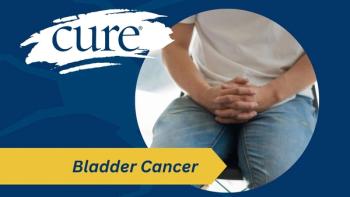
Please Stop Calling it Hospice When I'm Very Much Alive
One is meant to improve quality of life and the other is meant to care for end-of-life. Yet the two specialties of palliative and hospice care still continue to be confused not only by the patient, but also the provider.
While listening to my local public radio station on the way to work one morning, I heard a medical professional use the words "palliative" and "hospice" interchangeably in the interview they were giving, and I cringed. It was clear they saw the two types of care as synonymous when they aren't, and their own medical illiteracy was a disservice to their patients and anyone listening.
As the new kid on the health care block, I get why palliative care has been slow to catch on across all medical specialties who may treat chronic diseases and conditions. Funding and opportunities are limited to train providers, and many hospital systems and clinics don't have teams that specialize in palliative care to which they can refer patients and caregivers. This shortcoming means many of the medical staff find themselves unfamiliar and not the ideal candidates to even discuss this type of care with patients without sending up alarm bells.
The last thing a patient needs to believe is that a type of care that can improve their quality of life and management of their disease would somehow be associated with end-of-life care. I've seen the reaction and confusion firsthand when I bring up palliative care with fellow patients, and they instantly assume I'm using a fancier name for hospice care.
A friend had been caregiver to her young husband during the 16 months he had colon cancer. One night I specifically reached out to her to see if they had experienced palliative care during the time her husband had been in treatment. I was looking for a caregiver willing to speak about their experience with palliative care but wasn't aware that I was about to pull back to covers on a system that let her and her husband down.
Pregnant at the time of his diagnosis, she was not only faced with having to go through the tiresome last few months of pregnancy, she was having to do so while her husband faced surgery, chemotherapy and the countless appointments that seem to fit in between. Somewhere in the mix, a newborn became part of the delicate dance they had to do to navigate cancer care. She was left being both caregiver and mom to two men who needed everything she could give them.
She told me palliative care was offered to them toward the end, but no sooner was it offered than it was time for hospice to begin. I had to make sure she was talking about palliative care, and not confusing it with hospice care as it was offered at the end-of-life. As I better described palliative care to her, she admitted our discussion was bringing her to tears. To know that there was this thing, this type of health care available that could have surrounded and supported their young family during this horrible time was heartbreaking in retrospect. Why was it not offered sooner, especially as it would have enabled her husband to better manage what he was experiencing as a metastatic cancer patient and a brand-new father staring down a terminal diagnosis? I was left disappointed that yet another patient and another caregiver was shortchanged in their experience with cancer, and it made me more determined to ensure that others knew to speak up and ask for this often-misunderstood care that I assure them will only improve their experience facing cancer.
When advocating for palliative care with other patients, I always remind them that this isn't a rerouted road toward a cure. It's also not an attempt to dupe them into hospice care. We have to be very clear about that. It won't change the outcome of their disease, but it will improve the completeness of care they receive along the way. For my friend, it would not have changed the fact that she is now a young widow raising a toddler on her own, but it would have made her husband feel more supported in the care he was receiving as he watched his wife struggle to navigate motherhood and caregiving. Let oncology fight the disease, and welcome palliative care in to help manage the rest.





